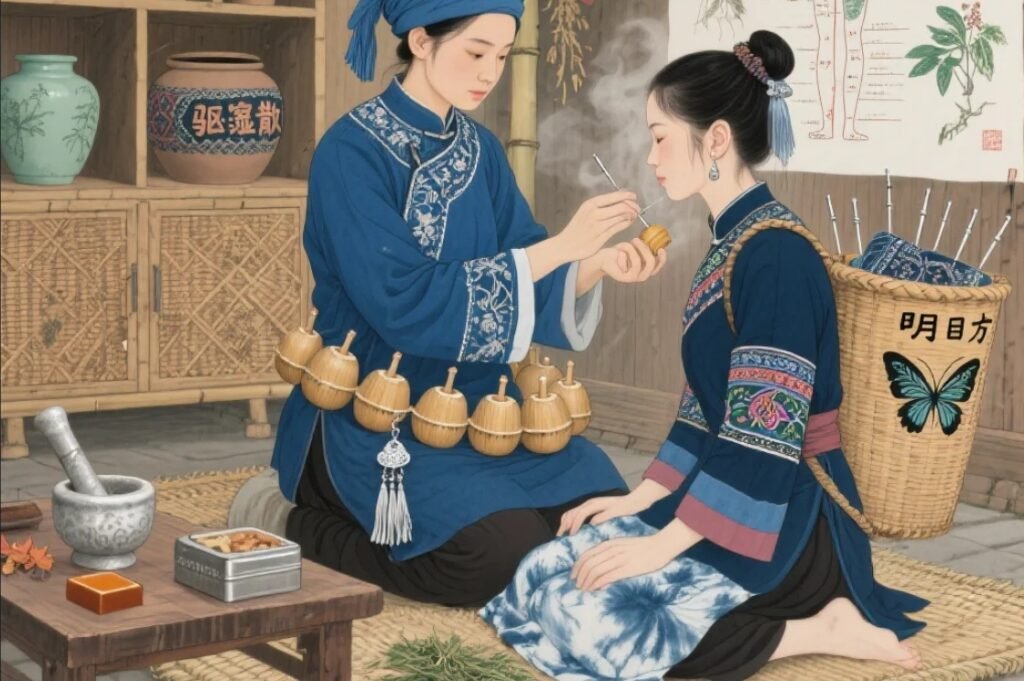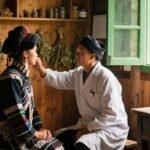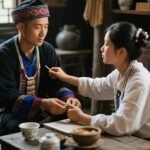Chongdangge (Bone Fracture)
Overview
Chongdangge refers to the complete or partial fracture of the bone structure in a specific part of the body caused by external factors such as falls, sprains, compression, twisting, blunt trauma, knife or gun attacks, falls from height, long-term accumulation of strain, and external toxins. It is commonly seen in the elderly and children. Chongdangge is classified as a major syndrome, which also includes Shangchong (injury to tendons), Shalian Jiu (dislocation), and Shasong (misalignment).
In Traditional Chinese Medicine (TCM), bone injuries are generally described through two aspects: bone and injury. “Bone” refers to the shape, while “injury” refers to the force involved. The shape can include meridians, blood, organs, muscles, joints, etc., and the force may cause mechanical damage. In ancient times, this was associated with terms such as “fracture” or “bone injury.”
In Western medicine, this condition involves partial or complete fractures of bone structures, including obvious cortical bone fractures and interruptions of trabecular bone.
Symptoms in Miao Medicine
Chongdangge is primarily caused by external injury, and the main pattern of this condition is qi stagnation and blood stasis. Other variations based on the disease progression include qi deficiency and blood stasis, qi and blood deficiency, and internal damp-heat accumulation.

Causes
Due to the remote living conditions and protective needs of Miao people, combined with long-term hard labor and a self-sufficient lifestyle, the probability of external injuries is high. Miao medicine attributes this disease primarily to knife or gun attacks, falls, trauma, aging, physical weakness, long-term strain, and external toxin damage.
Pathogenesis
The condition is caused by multiple factors, such as compression, trauma, falls, knife or gun attacks, and external toxin damage, leading to fractures in one or more parts of the body. It may also occur due to prolonged and repeated use of a particular body part, which leads to excessive fatigue and bone damage even without external injury.
Diagnosis
Clinical Features: Bone fractures accompanied by severe local pain and changes in the shape of the affected area.
History: Typically associated with direct trauma or habitual overuse, such as traffic accidents, falls, fights, or long-term weight-bearing.
Symptoms: Pain, bruising, functional impairment, bone creaking sounds, etc.
Diagnostic Tests
X-rays, CT, and MRI scans showing bone fractures in joints.
Differential Diagnosis
Shalian Jiu (Dislocation)
Both conditions fall under Miao medicine’s category of Shangchong. Shalian Jiu occurs when external forces cause the joint surfaces to move out of alignment, losing their normal relation. This condition can be divided into traumatic dislocation, pathological dislocation, and congenital dislocation. In addition to the dislocation, it also involves damage to the joint capsule, cartilage, ligaments, and surrounding soft tissues, leading to swelling, bruising, varying degrees of joint function loss, and joint adhesions.
Chongdangge, on the other hand, mainly refers to bone structural changes due to external trauma or overstrain, such as fractures, deformities, creaking bones, abnormal movements, and swelling or bruising around the bone fracture site. Severe cases may present with fever, shock, or other complications.
Treatment by Pattern
Qi Stagnation and Blood Stasis
Symptoms: Local pain, swelling, bruising, muscle tension, limited movement, dark tongue, and thin, stringy pulse.
Approach: Promote blood circulation and remove blood stasis, relieve pain and move qi.
Herbal Prescription:
Safflower (hong hua) 15g
Peach kernel (tao ren) 15g
Red peony root (chi shao) 15g
Cyperus (xiang fu) 12g
Chinese lizard tail (ze lan) 18g
Rhubarb (da huang) 10g
Prepare as a decoction and take orally.
Qi Deficiency and Blood Stasis
Symptoms: Local pain, limited movement, fatigue, shortness of breath, pale complexion, pale tongue, weak and thin pulse.
Approach: Dispel wind-dampness, open meridians, tonify qi, and nourish blood.
Herbal Prescription:
Eucommia bark (du zhong) 18g
Mulberry twig (sang zhi) 12g
Dipsacus (xu duan) 18g
Spatholobus stem (ji xue teng) 20g
Prepare as a decoction and take orally.
Qi and Blood Deficiency
Symptoms: Local pain, limited movement, pale complexion, pale eyelids, dry mouth, thirst, thin and pale tongue, thin and weak pulse.
Approach: Tonify qi and nourish blood.
Herbal Prescription:
Seven-leaf lotus (qi ye lian) 15g
Papaya (mu gua) 12g
Chinese wild ginger (shen jiu) 15g
Cowhage (niu xi) 20g
Prepare as a decoction and take orally.
Internal Damp-Heat Accumulation
Symptoms: Local pain, limited movement, five-center heat, irritability, purple lips, poor appetite, blurry vision, constipation, dark urine, reddish skin in the affected area, high skin temperature, red tongue, slippery pulse, and greasy or yellow coating.
Approach: Clear heat and resolve dampness, relieve pain.
Herbal Prescription:
Earth bee (di feng zi) 15g
Half-branch lotus (ban zhi lian) 15g
Safflower (hong hua) 15g
Purslane (ma chi xian) 20g
Fritillaria (zhe bei mu) 20g
Prepare as a decoction and take orally.
Prevention and Care
Begin functional rehabilitation exercises as soon as possible to restore limb function and (helps maintain) atrophy and contractures of the affected joint.
Consume calcium-rich foods to strengthen bones.
Adjust medications to maintain a good mental state.
Pay attention to safety and (helps maintain) further injuries such as falls.
Conclusion
Miao medicine considers Chongdangge to be caused by external trauma, gunshot wounds, falls, and external toxins, as well as aging and physical weakness. External injuries lead to qi stagnation and blood stasis, while internal organ dysfunction may also cause the muscles and bones to lose nourishment, making them more prone to fracture. Treatment primarily focuses on pain relief, with herbal formulas to promote circulation, clear heat, and tonify qi and blood, based on the patient’s specific condition.



Leave a Reply